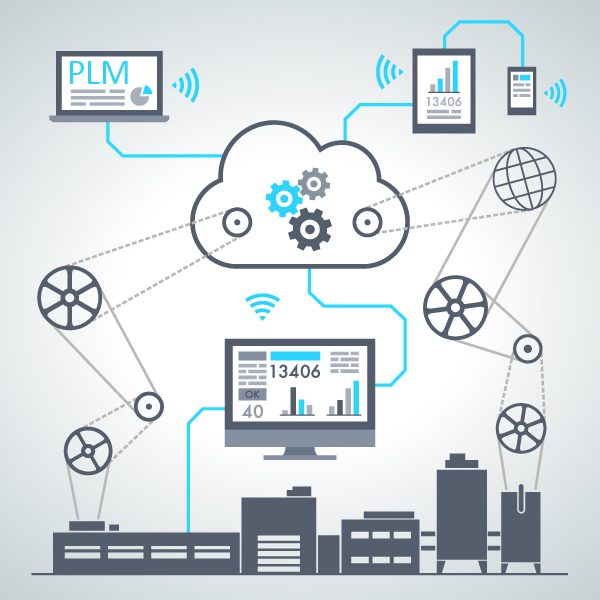
|
Wanderers between the worlds of digital platformsBy Karsten Theis PLM is "in" again. Actually, it was never "out", because PLM in the form that we want to do it today has never existed before. It was none other than Dirk Spindler, head of R&D Processes, Methods and Tools at Schaeffler, who said that in the interview we are publishing in this newsletter. But he also says that IT system manufacturers need to rethink how the term "PLM" fits in. I would go even further and wish that they would finally breathe real product life into the term and push the idea of digitalization right up to the end of the product lifecycle. 
Multi-platform, multi-cloud and model-based everything are some of the phrases you hear when leading companies in the automotive and supply industries think about their future PLM architecture. At PROSTEP's 25th anniversary celebration, we had the privilege of having some of them along as guest speakers. One of the key messages was that interoperability will in future be more important than ever in ensuring end-to-end digitalization of business processes. Actually bringing end-to-end digitalization into being is one of the challenges we have been tackling for 25 years. We will not be running out of work any time soon because interoperability will continue to occupy the industry for decades to come. Professor Oliver Riedel, head of the Institute for Control Engineering of Machine Tools and Manufacturing Units (ISW) at the University of Stuttgart and member of the board of directors of the Fraunhofer IAO, made this clear in his presentation. However, end-to-end digitalization should no longer be seen in linear terms but rather as a cycle in which the data from the digital twin is fed back into the digital master. The digital twin is the link between the digital product world and the real product world and thus the ultimate goal of all digitalization initiatives. Without it, it is difficult to imagine the digital transformation of business models, something addressed by Dr. Siegmar Haasis, CIO R&D Cars at Daimler, in his presentation. At least this is true for the companies in the discrete manufacturing industry, which still make real products and production systems, no matter how smart and networked they may be. They are based on digital platforms in which the enormous quantities of data provided by the digital twins have to be managed. This is more complex by several orders of magnitude than what is being done by the commercial champions of the platform economy such as Amazon or Uber. The question is who will come out on top in the race for industrial platforms. In his presentation, Jochen Breh from Bosch's Governance IT Architecture department underscored the importance of cross-company platforms on which new ecosystems emerge. Haasis described the digital twin as the supreme discipline of digitalization and digital transformation. Carmakers have a clear idea of what they need it for (e.g. to validate autonomous driving functions) but are still considering how it should be structured. While many experts are convinced that a single twin cannot and will never exist, Haasis defended the idea of a holistic digital twin, which spawns different variants. Spindler also advocated a digital twin with different views on it. Only one thing appears certain: Construction of this twin will be very time-consuming, especially if the intention is to combine all development data, including simulation models, with operational data. But real value added only comes when the loop through development, production and operation is closed. It is also unclear which platforms the digital twin will actually reside on. Will it be on the IoT platforms, which bring together the operational data from the real product lifecycle; data which lubricates the workings of the platform economy? Or rather on the PLM platforms on which the twin takes shape and should perhaps already be simulated as an embryonic functional prototype? Personally, I believe that the digital twin will be a wanderer between the worlds of the different platforms. Which is why openness and interoperability of the different platforms are indispensable prerequisites for its existence. It must be able to breathe and absorb information on different platforms. By definition, the digital twin is a mutant that quickly takes on different forms and may have to meet completely different requirements tomorrow. Companies will conduct a lot of experiments and will undoubtedly produce the odd Frankenstein monster. As far as IT organizations are concerned, this means that they do not have a complete blueprint for the digital twin but must instead be agile in their response to new applications and constantly adapt it during operation. 
How much agility an organization can cope with is an unanswered question, and according to Ralf Waltram, head of IT Delivery at the BMW Group, there can only be one answer: 100 percent. As he sees it, the strategy of bi-modal IT, which BMW pursued for a long time, did not really work because the agile sprinters constantly had to wait for the waterfall to catch up. At least with regard to the product engineering process as a whole, other companies take a more pragmatic view: Schindler, for example, has a hybrid approach, with what Spindler calls clear milestones and targets between which the teams can then move agilely. The discussion is by no means over yet, and I am curious to see what new insights this year's prostep ivip Symposium will bring us. Agility is one of the keynote topics of the event, which will be held on 9 and 10 April at the ICS in Stuttgart. And you will also be able to meet up with us there. |
|
| © PROSTEP AG | ALL RIGHTS RESERVED | IMPRESSUM | DATENSCHUTZERKLÄRUNG | HIER KÖNNEN SIE DEN NEWSLETTER ABBESTELLEN. |

